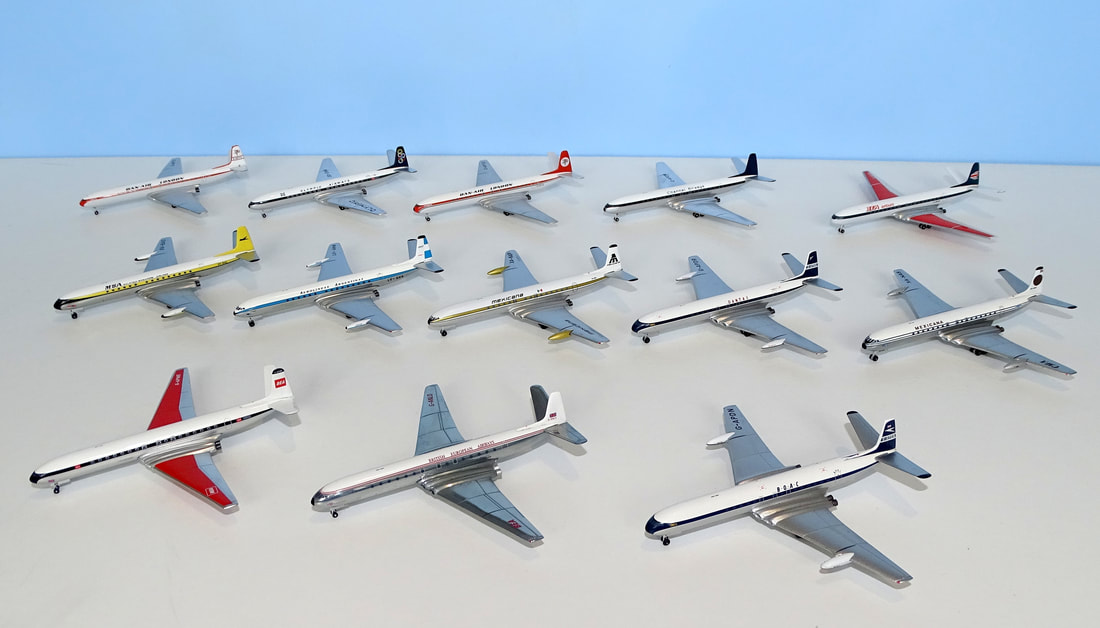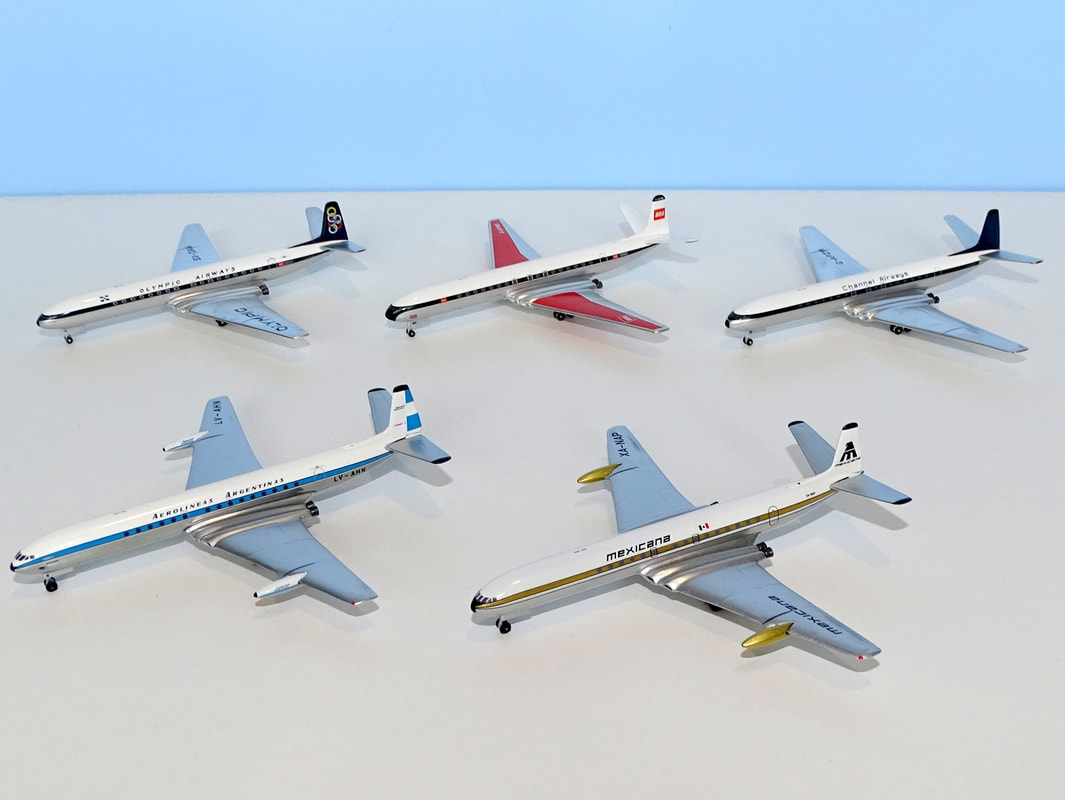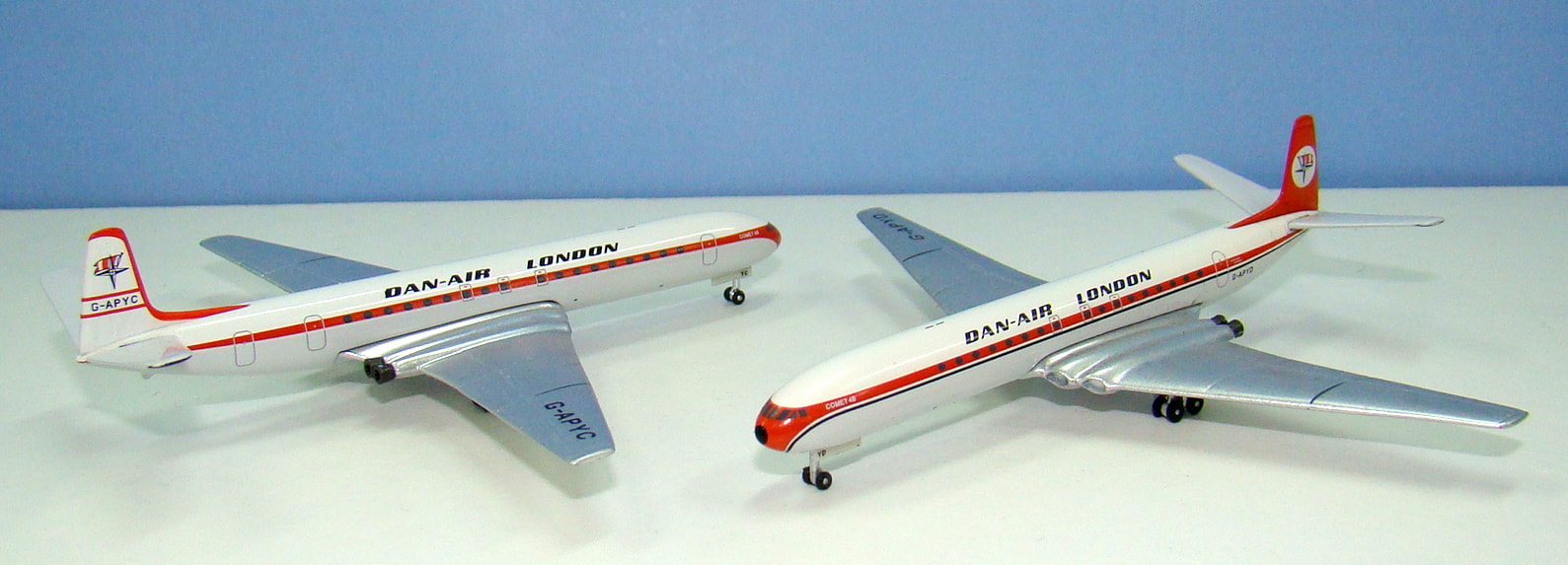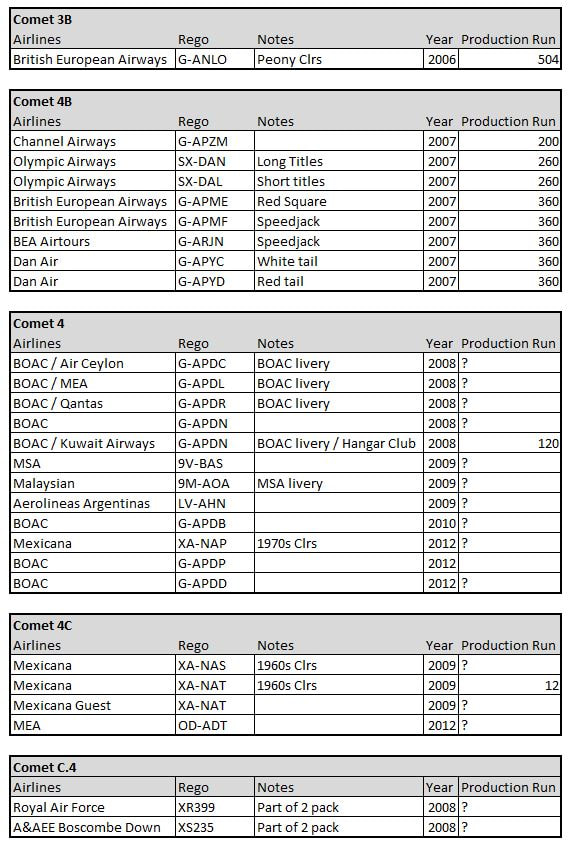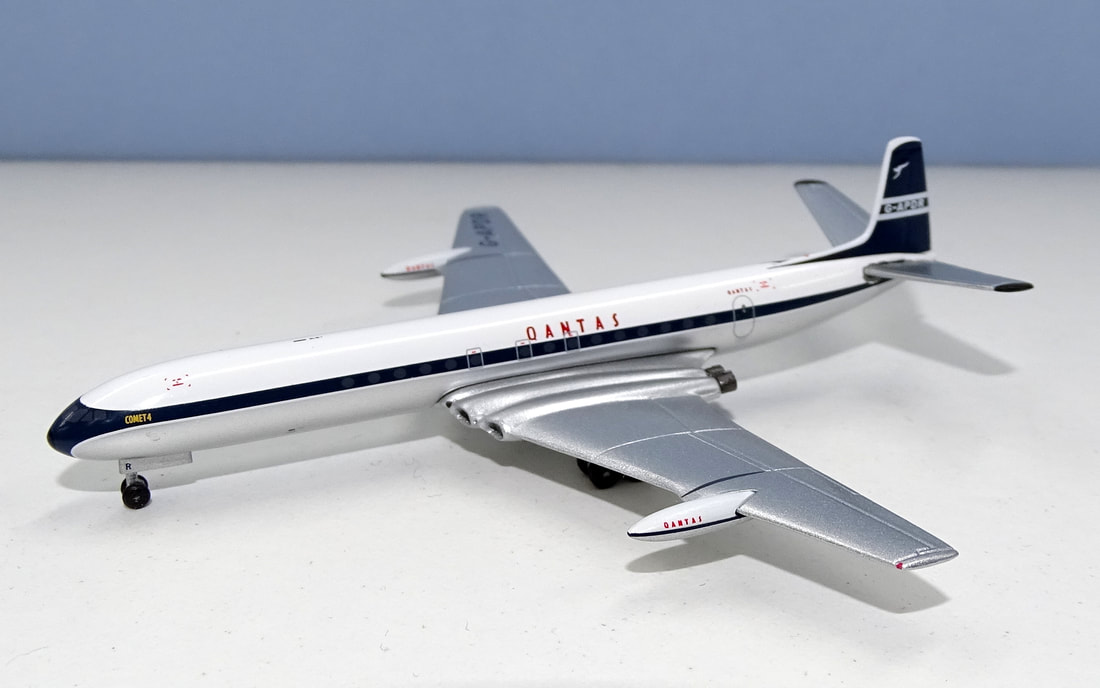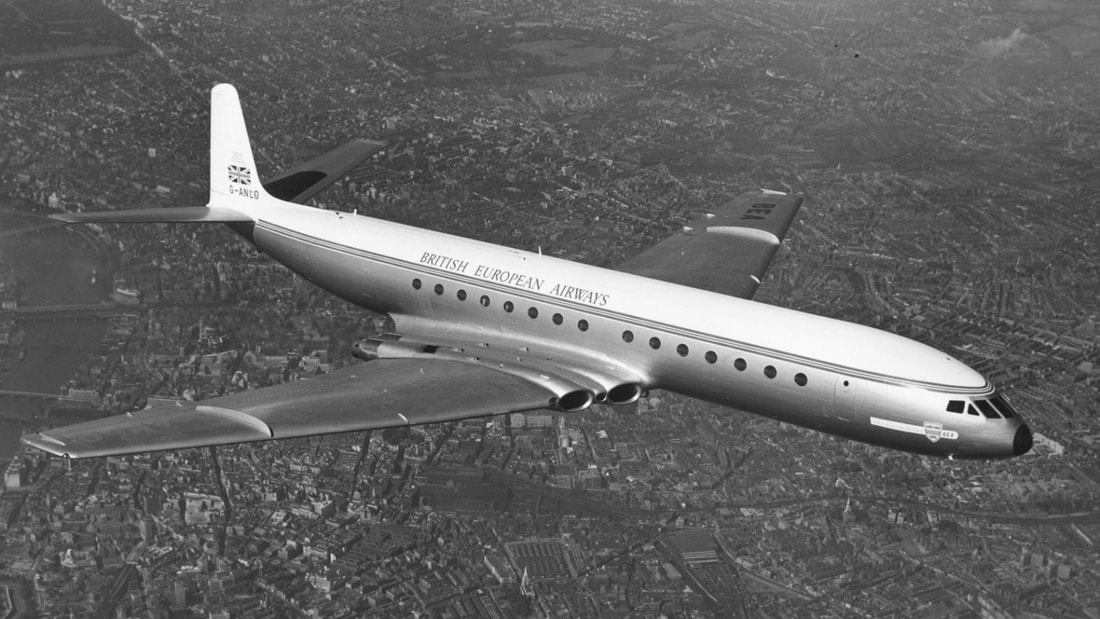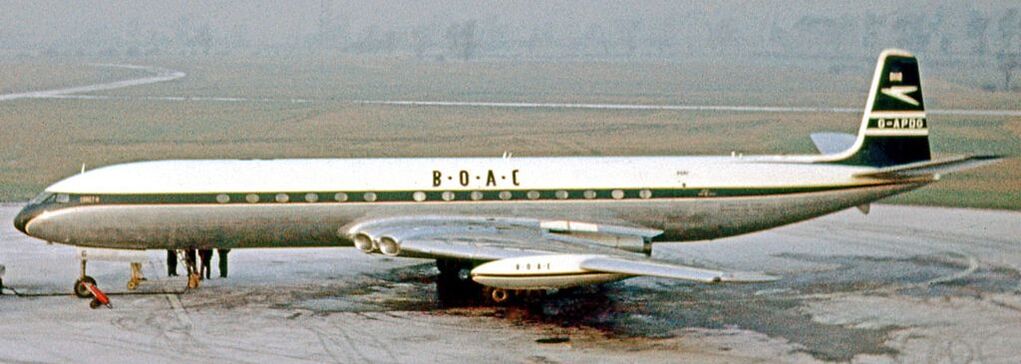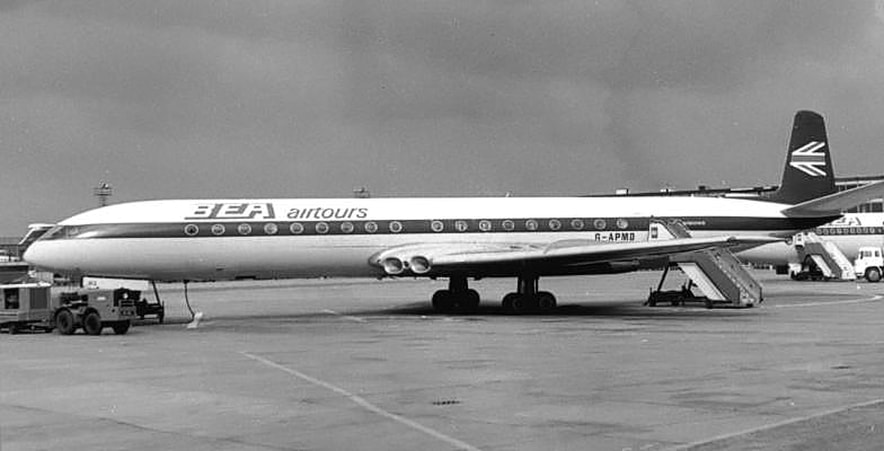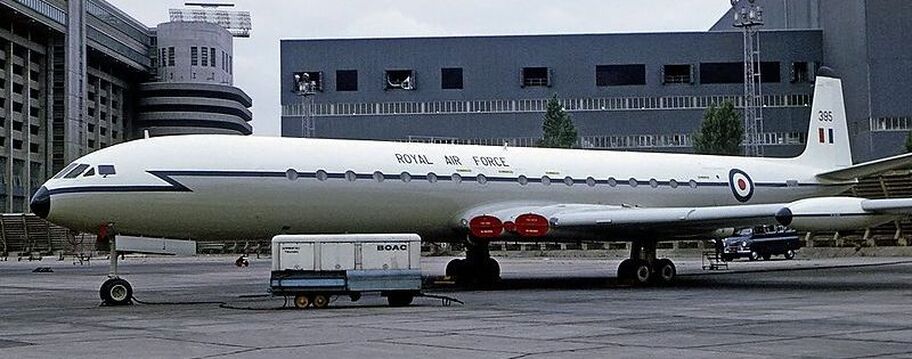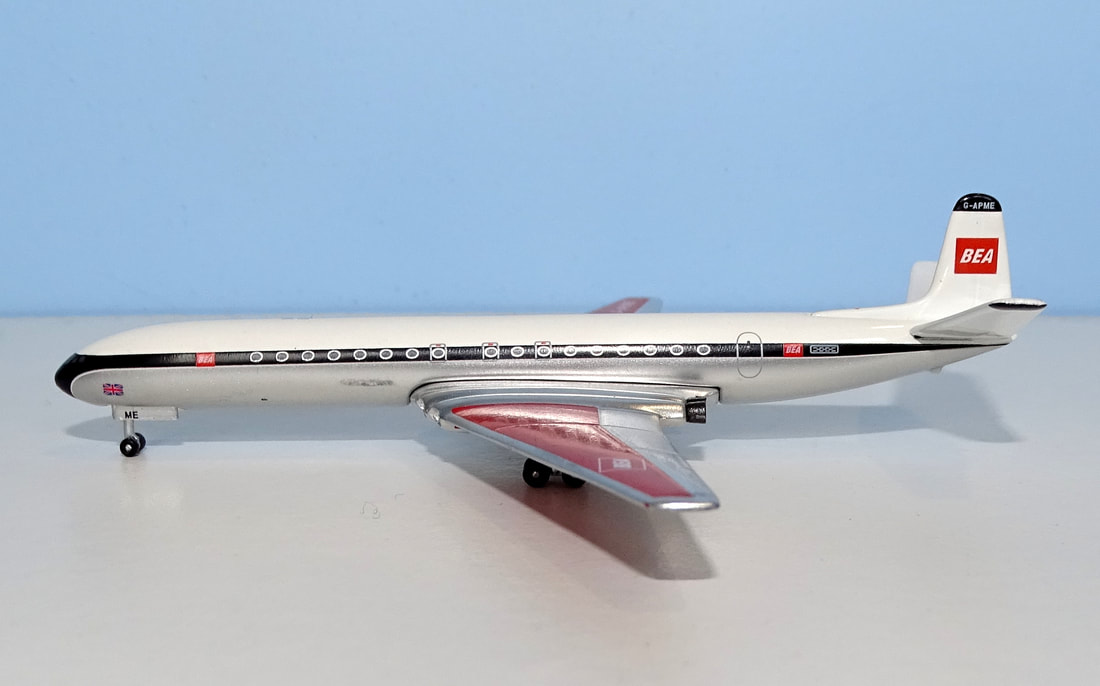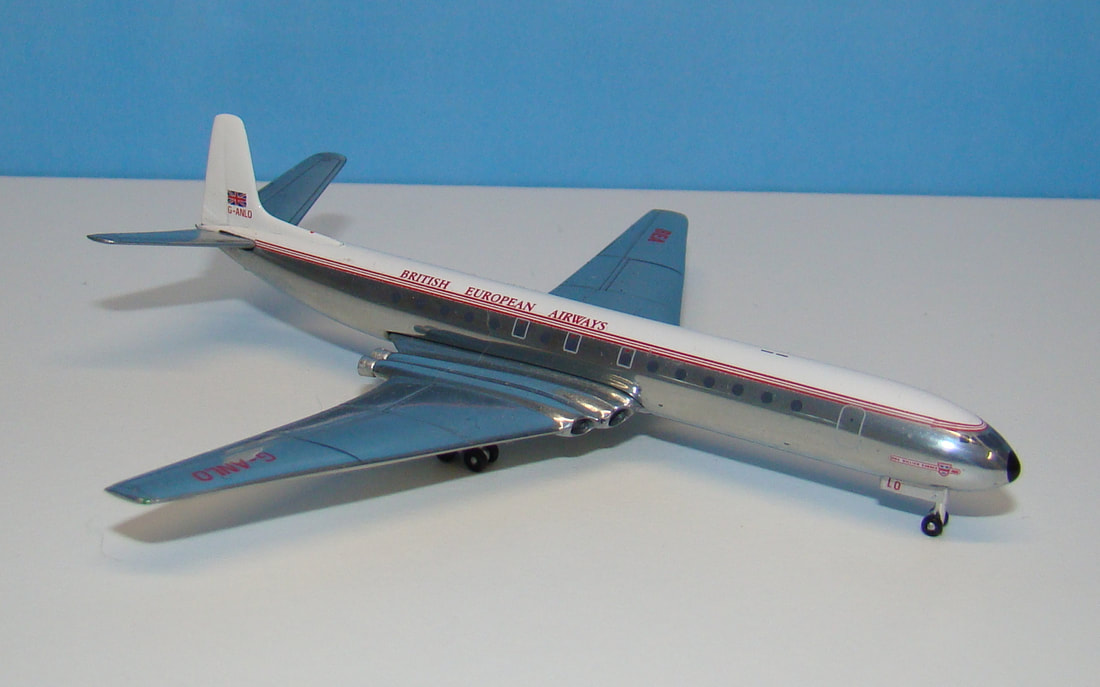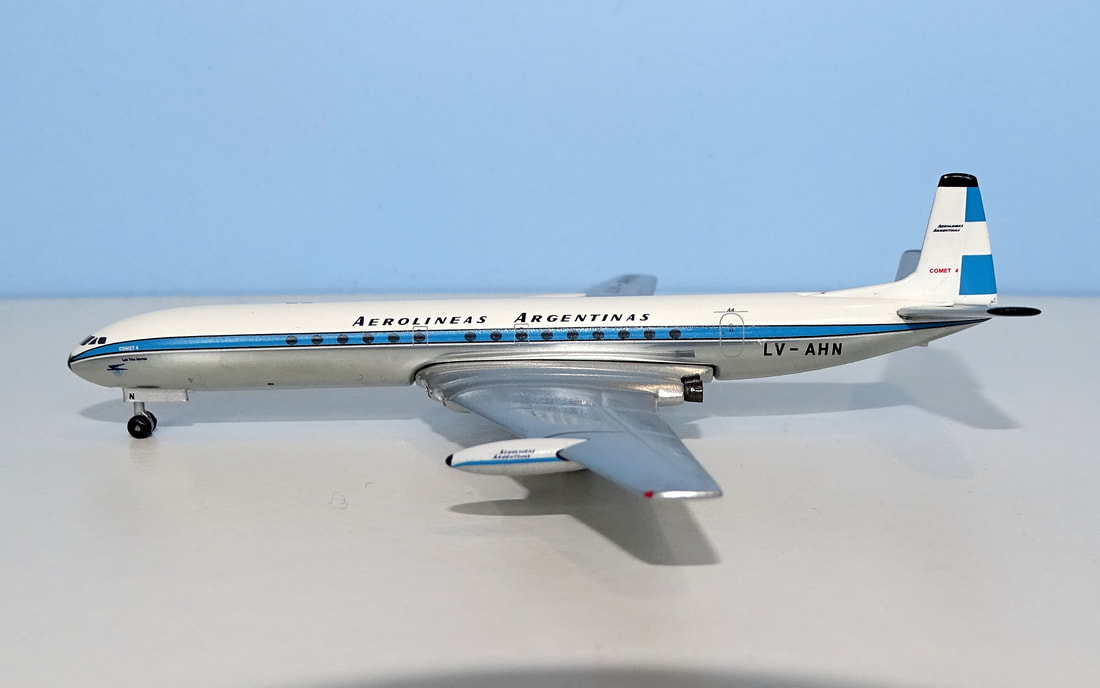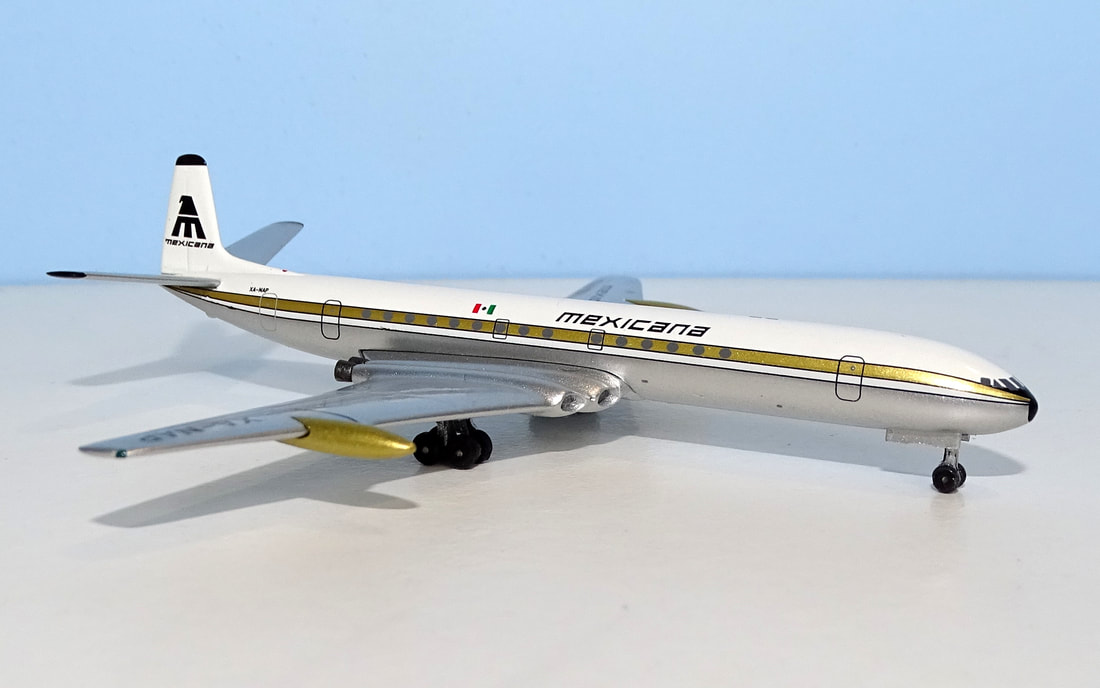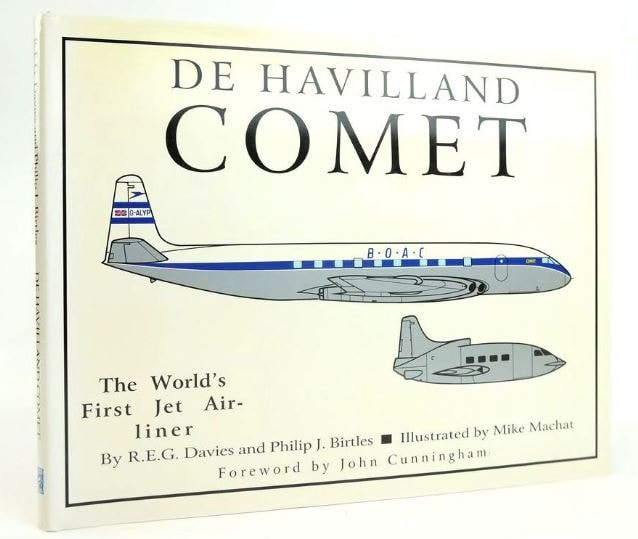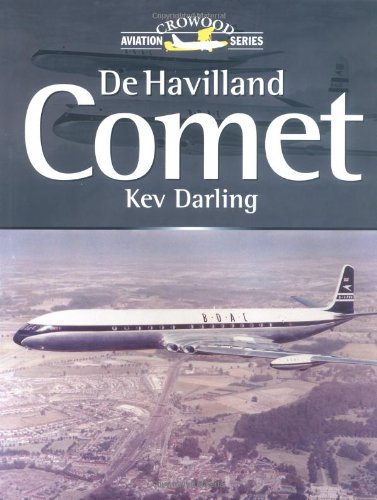de Havilland DH-106 Comet 3/4 Moulds in 1:400
Updated: May 2023
The de Havilland Comet represented Britain's hopes of claiming a meaningful portion of the postwar jet orders and was one of few potentially successful outcomes of the Brabazon committee (arguably only the Viscount and the Dove could be called really successful). Taking the UK's lead in jet engines and pioneering a whole range of technologies it briefly looked like the Comet would be the first in a line of successful British jet transports. Of course, this wasn't to be and the tribulations of the Comet 1 are well known. The prototype first flew on July 27, 1949 but by mid-1954 the aircraft's Certificate of Airworthiness had been revoked.
By the mid-1954 the Comet's failings were understood and the lengthened and improved Comet 3 was in testing (only one airworthy plane was produced). Further improved and stretched by 5.64m over the original Comet 1, with some extra fuel capacity it became the Comet 4. That entered service across the Atlantic on 4th October 1958 with BOAC, giving the flag carrier a very short lead in transatlantic jet operations of less than 3 months. Less than a year later BOAC began to shift its Comet 4s from transatlantic services in favour of new 707s.
In retrospect, the original Comet design was almost certainly too small and it is unlikely that it would have ever really broken the all important US market but there's no disguising the disastrous impact the Comet 1 had on the prospects of the Comet and the UK civil industry overall. The Comet 4 was little competition for 707s and DC-8s but it was really a product of an earlier age. Its amazing to think that passenger numbers had risen so sharply in the 50s that the original Comet seated only 36-44 passengers but by the end of the decade 707-320s were jamming in close to 200. The graceful Comet 4 only seated 74-81 passengers in comparison. Still the type saw good service with no less than 45, of 73 made, ending their careers at Dan Air.
BOAC took 19 original Comet 4s whilst BEA took 18 Comet 4Bs (a 2m longer version with shorter wings) whilst 23 of the ultimate version the 4C were built. The 4C had the 4B fuselage and the 4's wings. Typically the 4B didn't have the wing pinion tanks. The single comet 3 actually had both types of wing at different points in its career as a test plane. An interesting range of airlines flew Comets especially as they were leased out from the BOAC fleet to former colonies or passed to charter operators.
de Havilland Comet 3/4 in 400 Scale
Only Aeroclassics would go near a Comet in 400 scale even pre-2010. That's a sad indictment of the scale in some ways, but even Aeroclassics hasn't attempted a Comet 1 or Comet 2. Aeroclassics have made 27 Comets representing all the other variants, but not without some compromises - see below. The breakdown of the releases is as follows:
It is worth pointing out that several of these Comets are extremely hard to find and are probably some of the more expensive models in the scale. Of the 27 made I currently own 13 of them. I'm certainly keen to add the BEA Speedjack G-APMF, some of the hybrid BOACs and the MEA if I can find them at a reasonable price.
de Havilland Comet in Real Life
The differences between the 5 Comet versions makes it a real challenge to make all the different variants in 400 scale, and Aeroclassics took the decision to make a single mould that they could use to represent all the Comet 4 versions despite the differences. It is hard to criticise that decision seeing as without it it is unlikely any Comets would have been made in the scale. Nonetheless here are the 4 versions that have 400 scale representatives in the flesh with the differences called out:
Above: The Comet 3 modified with the shorter wings of the 4B became the Comet 3B. Note in this guise it lacked the pinion wingtanks of the Comet 4 but had the extra wing fences.
Below: The Comet 4 had a greater wingspan than the 3B and later 4B but kept the shorter 33.99m fuselage.
Below: The Comet 4 had a greater wingspan than the 3B and later 4B but kept the shorter 33.99m fuselage.
Above: As is evident from the extra windows from the engines forward the 4B had a lengthened fuselage courtesy of a 2 metre stretch. The wing was the same as trialled on the 3B - roughly 2 metres narrower than the span of the Comet 4.
Below: The ultimate Comet variant was the 4C, which married the wing of the Comet 4 with the longer fuselage of the 4B. In RAF service it was known as the C.4.
Below: The ultimate Comet variant was the 4C, which married the wing of the Comet 4 with the longer fuselage of the 4B. In RAF service it was known as the C.4.
Aeroclassics Mould (2006)
The Aeroclassics Comet is a nice little mould. The overall form is good although the nose could perhaps be slightly pointier. As I've mentioned the mould is something of a composite at times depending on the version it is representing.
The fuselage appears to be modeled on the Comet 3/4 which was 33.99m long. The wing has the span of the Comet 3/4/4C - 35m in real life - but initially appeared without the pinion tanks so the Comet 3 and 4B models appeared first. The real wingspan of the Comet 4B was just under 33m and it also had wing fences which don't appear on the models other than as printing.
Once the 3 and 4Bs were out of the way the wing moulding was adapted in 2008 to include the pinion tanks meaning the Comet 4 and 4Cs had an accurate wing. The landing gear was also updated at the same time to add rolling gear.
In 400 scale the difference in wingspan and fuselage length would be about 0.5cm so isn't dramatic. Summarising accuracy of the releases: the Comet 4 models (10 releases) are accurate both in terms of fuselage length and wingspan. The Comet 3B (1 release) is missing the wing fence and has the wider wings but has the correct dimensions. The Comet 4B (8 releases) has a shorter fuselage and bigger wingspan than it ought to have (and lacks the wing fence) so is the most inaccurate. Lastly the Comet 4C (3 releases) has accurate wings but too short a fuselage. It's a shame that there aren't 100% accurate versions for the 4B and 4C but understandable given the circumstances.
There haven't been any new Comet releases since 2012 and I'm not sure the surviving Comet 4 mould is available anymore. Despite the fuselage length I would love to see some more Comet 4Cs for missing schemes.
Lastly if you don't have it already I can heartily recommend the following Comet related books:
